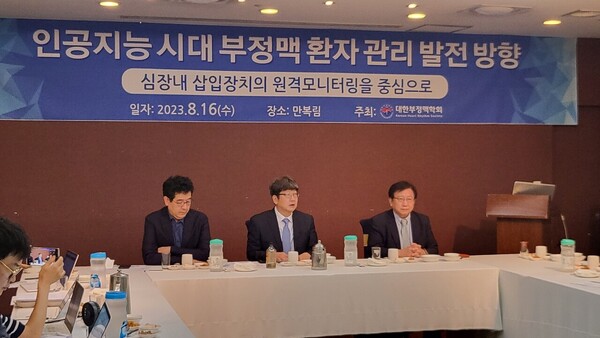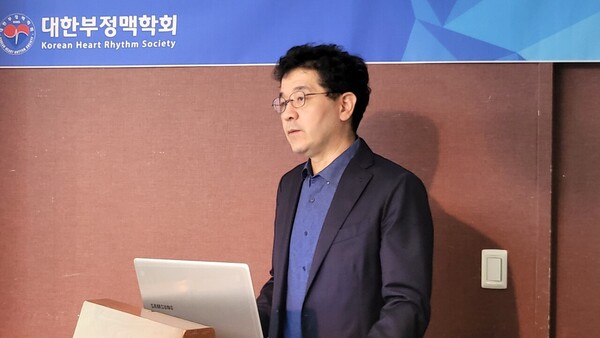
A group of doctors called for allowing "telemonitoring" of arrhythmia patients with devices implanted to detect pulses in the heart. They argued that remote monitoring is a medical treatment process and not an act of medical treatment.
At a news conference last Wednesday, the Korean Heart Rhythm Society (KHRS) pointed out that remote monitoring, which can analyze abnormalities in arrhythmia patients with cardiac implants in real time, is regarded as telemedicine in Korea and is restricted under the Medical Service Act.
The cardiac implantable electronic device (CIED) refers to an implantable cardioverter defibrillator (ICD), cardiac resynchronization therapy (CRT), and a pacemaker implanted in the heart for the treatment and management of patients. Patients with CIEDs must visit the hospital periodically throughout their lives to receive care based on heart rhythm information detected by the device.
In many foreign countries, including the U.S., Japan, Hong Kong, Singapore, Taiwan, and China, medical workers actively use remote monitoring to analyze the information and signals sent by CIEDs in real time to make diagnoses and guide necessary actions.
However, telemonitoring is not being made active in Korea due to medical laws. That’s because the Ministry of Health and Welfare regards doctors monitoring patients' ECG data in real-time and guiding them to take appropriate action or visit a hospital as telemedicine.
"Surgery can be done remotely, but (in Korea) it is not allowed to view the patient's condition remotely simply," said Dr. Noh Tae-ho, who served as vice chairman of KHRS. "As patients come to the hospital four times a year to check the machine status and records, we can only make retrospective analysis. The patient comes to the hospital four times yearly to check the machine status and records, and we can only analyze them retrospectively. For instance, we say, ‘The records show a fatal arrhythmia. That was close.’ How ridiculous our reality is!"

Park Sang-won, director for policy at the society, said, “Telemedicine is treating patients via video, phone, or email while telemonitoring is receiving data on the patient's condition. The Ministry of Health and Welfare interprets telemonitoring as telemedicine, prohibiting explaining the patient's condition or guiding certain actions."
According to Park, the society requested that the ministry allow "patient status-checking and hospital visit notification services using cardiac electrical implantable devices and remote monitoring devices." Still, the ministry said “no,” noting that it is a medical practice.
The ministry cited Article 34 of the Medical Service Act as the reason for disapproval.
They only allow telemedicine between medical practitioners. It is possible to refer to the collected information during face-to-face medical treatment, but checking relevant data without the patient's presence, providing medical consultation, or determining the need for a visit and the frequency of visits constitutes telemedicine between a doctor and a patient.
As a result, the “Home Healthcare Pilot Project for Heart Disease Patients,” implemented in 2020, also conveyed unnecessary information in the data analyzed by the device. According to the reimbursement criteria of the pilot project, only battery replacement alarms, electrode deterioration, tachycardia, and electric shock occurrences are to be written in the “Device Analysis Key Data” section.
Park added that the ministry also recognizes the importance of remote monitoring.
He cited the ministry's interpretation of the “cardiac management service using wristwatch-type ECG devices,” which was selected as the first demonstration case of the Ministry of Science and ICT's “ICT Regulatory Sandbox” in 2020.
“The health and welfare ministry interpreted that it is permissible for medical institutions to use patient information transmitted by medical institutions to guide visits and utilize the transmitted information during visits,” he noted.

